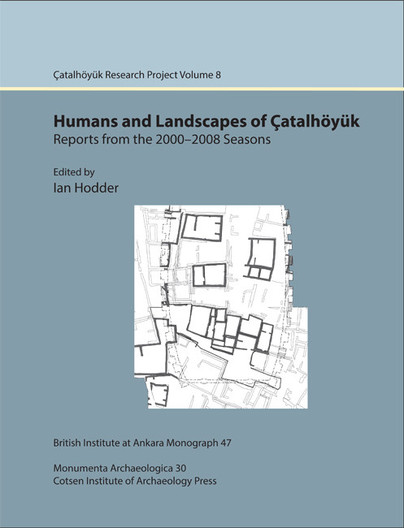
Format: Hardback
Pages: 320
ISBN: 9781898249306
Pub Date: 31 Aug 2013
Series: British Institute at Ankara Monograph
Illustrations: 250 figures and 50 tables
Description:
The Neolithic site of Çatalhöyük in Turkey has been world famous since the 1960s when excavations revealed the large size and dense occupation of the settlement, as well as the spectacular wall paintings and reliefs uncovered inside the houses. Since 1993 an international team of archaeologists, led by Ian Hodder, has been carrying out new excavations and research, in order to shed more light on the people who inhabited the site. The present volume reports on the results of excavations in 2000-2008 that have provided a wealth of new data on the ways in which the Çatalhöyük settlement and environment were dwelled in.
A first section explores how houses, open areas and middens in the settlement were enmeshed in the daily lives of the inhabitants, integrating a wide range of different types of data at different scales. A second section examines subsistence practices of the site’s inhabitants and builds up a picture of how the overall landscape was exploited and lived within. A third section examines the evidence from the skeletons of those buried within the houses at Çatalhöyük in order to examine health, diet, lifestyle and activity within the settlement and across the landscape. This final section also reports on the burial practices and associations in order to build hypotheses about the social organization of those inhabiting the settlement. A complex picture emerges of a relatively decentralized society, large in size but small-scale in terms of organization, dwelling within a mosaic patchwork of environments. Through time, however, substantial changes occur in the ways in which humans and landscapes interact.
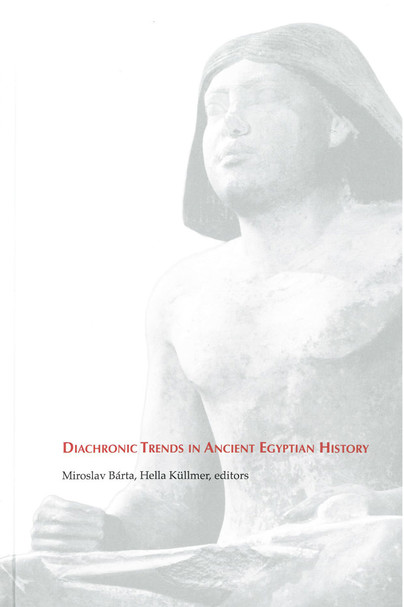
Format: Paperback
Pages: 221
ISBN: 9788073084448
Pub Date: 31 Jul 2013
Description:
The book includes contributions of the following authors: Hartwig Altenmüller, Ladislav Bareš, Miroslav Bárta, Andreas Effland, Martin Fitzenreiter, Hans Goedicke, Peter Jánosi, Dieter Kurth, Christian Loeben, Juan Carlos Moreno García, Jana Mynářová, Anthony Spalinger, Miroslav Verner, Hana Vymazalová, Wolfgang Waitkus.
Making and Breaking the Gods
Christian Responses to Pagan Sculpture in Late Antiquity
Format: Hardback
Pages: 350
ISBN: 9788771240894
Pub Date: 31 Jul 2013
Description:
Drawing on both textual and archaeological sources, this book discusses how Christians in Late Antiquity negotiated the sculptural environment of cities and sanctuaries in a variety of ways, ranging from creative transformations to iconoclastic performances. Their responses to pagan sculpture present a rich window into the mechanisms through which society and culture changed under the influence of Christianity. The book thus demonstrates how Christian responses to pagan sculpture rhetorically continued an old tradition of discussing visual practices and the materiality of divine representations.
Focusing in particular on the Egypt and the Near East, it furthermore argues that Christian responses encompass much more than mindless violence and need to be contextualised against other social and political developments, as well as local traditions of representation.
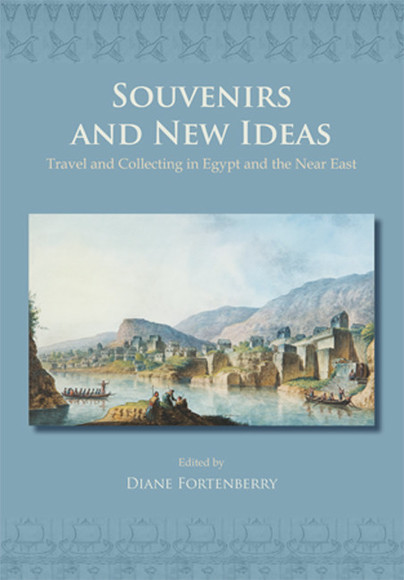
Format: Paperback
Pages: 200
ISBN: 9781842178157
Pub Date: 30 Jun 2013
Series: ASTENE Publications
Description:
During the 18th and 19th centuries, many travellers aimed to record their travels through Egypt, Mesopotamia, the Levant and Turkey by collecting souvenirs and mementos of places they had visited. This natural inclination took many different guises: from innocent activities such as making diaries and sketches, gathering academic knowledge or taking photographs, to acquiring souvenirs, very often antiquities. Other, more unscrupulous, travellers undertook journeys specifically to ‘collect’ antiquities to form the basis of museum collections or to profit by re-selling them.
Souvenirs and New Ideas explores the human desire to retain the memory of a journey by ‘collecting objects’ with a series of essays examining the motivation of a variety of different travellers ranging from intrepid female solo travellers to European royalty. The acquisitions of these individuals ranged from tales of folklore and academic knowledge to the wholesale looting of Egyptian antiquities. Although the habit of ‘collecting antiquities’ is deplored and condemned today, this volume sheds light on the attitudes behind the practice and seeks to strengthen our current beliefs about the value of cultural patrimony.
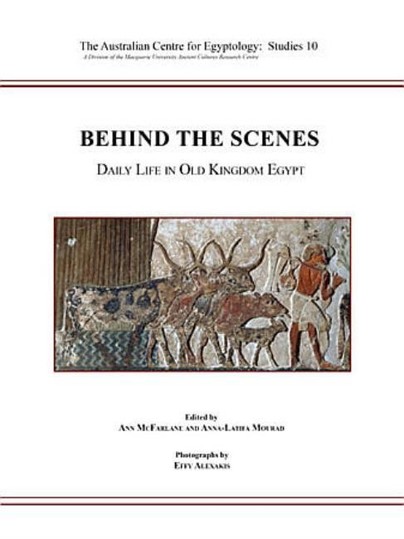
Format: Paperback
Pages: 196
ISBN: 9780856688607
Pub Date: 03 Jun 2013
Series: ACE Studies
Description:
Scenes from the Old Kingdom tombs represent our main sources for the study of daily life of private individuals. Written by a number of specialists with years of research, this monograph deals with various aspects of life in ancient Egypt, presented in an accessible manner to the scholar and lay-person alike. Richly illustrated with an excellent selection of photographs and drawings, the book aims to bring the reader as close as possible to the Egyptian sources, allowing them to delve into the world behind the scenes.
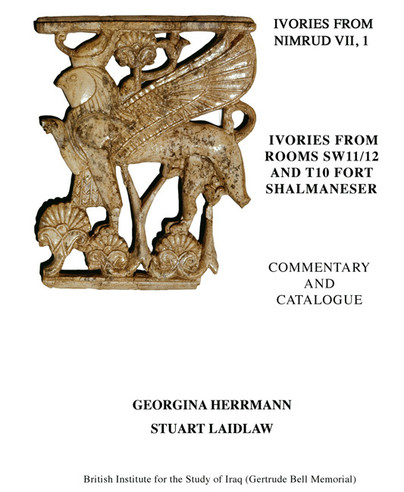
Format: Hardback
Pages: 676
ISBN: 9780903472296
Pub Date: 31 May 2013
Description:
The Lost Art of the Phoenicians Fifty years have passed since the British School of Archaeology in Iraq raised the last ivory from the soil of Fort Shalmaneser. Literally thousands were found, many of which have already been published inIvories from Nimrud I-V, while VI recorded the outstanding pieces from the North West Palace. Ivories from Nimrud VII, Ivories from Rooms SW11/12 and T10 completes the publication of the assemblages in the Fort, as far as records permit.
The ivories of Room SW11/12 are similar in character to those of Room SW37 and probably represent another consignment of booty, while those of T10 in the Throne Room block include pieces from all four traditions, as well as some entirely new ones.With the primary publication completed, it is now possible to look at these remarkable ivories as a whole rather than studying them by prov¬enance, as is discussed in detail in the Commentary. Not surprisingly, it immediately becomes apparent that the majority can be assigned to the Phoenician tradition. There are at least twice as many Phoenician ivo¬ries than the other Levantine and Assyrian ivories. They form therefore an incredible archive, recording the lost art of the Phoenicians, long famed as master craftsmen.The Phoenician ivories can be divided into two; the finest, the Clas¬sic Phoenician, often embellished with delicate, jewel-like inlays, and the other examples still clearly Phoenician in style and subject. While the Classic pieces were probably carved in a single centre, possibly Tyre or Sidon, the others would have been carved in a variety of dif¬ferent Phoenician centres, located along the Mediterranean seaboard.Designs on Syrian-Intermediate ivories are versions of some Phoe¬nician subjects, employing different proportions and styles. They may represent the art of the recently-arrived Aramaean kingdoms, copying their sophisticated neighbours, while North Syrian ivories are entirely different in subject and character and derive from earlier Hittite traditions.The ivories found at Nimrud present a unique resource for studying the minor arts of the Levantine world.
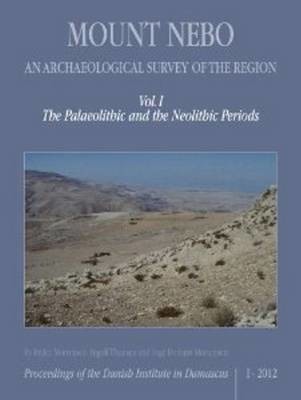
Format: Hardback
Pages: 146
ISBN: 9788771240788
Pub Date: 31 May 2013
Description:
During six seasons (1992-1998) an intensive survey of the Mount Nebo region was accomplished under the auspices of the Franciscan Archaeological Institute at Mount Nebo and the Danish Palestine Foundation. It was followed by a brief reconnaissance in 2008. The survey was centered around Siyagha, covering an area of approximately 35 square kilometres.
This volume is dedicated to the description of 79 locations and single finds, which can be attributed to the Stone Age. In the presentation the material has been divided into four chronological groupings, covering the Lower, Middle, Upper-Epipalaeolithic, and the Neolithic periods based on diagnostic artifacts, such as for example Acheulean handaxes, Levallois- and Mousterian points, Neolithic arrowheads, bipolar blade cores, and pottery.
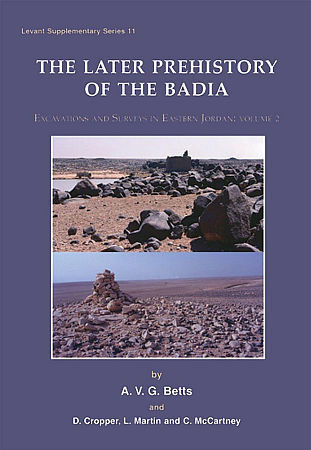
Format: Hardback
Pages: 240
ISBN: 9781842174739
Pub Date: 03 May 2013
Series: Levant Supplementary Series
Description:
The Jordanian badia is an arid region that has been largely protected from modern development by its extreme climate and has preserved a remarkably rich record of its prehistoric past. This is the second of two volumes to document extensive surveys and excavations in the region from Al-Azraq to the Iraqi border over the period 1979-1996. Broadly, it covers the Late Neolithic and Chalcolithic of the eastern badia.
Over time, an outline prehistory of the region has emerged. Late Epipaleolithic campsites have been found in the north-west of the harra in the foothills of Jebel Druze, while the central basalt region saw a floruit of activity in the late Aceramic Neolithic, when it was used extensively for hunting. This volume covers the following period, which witnessed a further spread of campsites and short-term occupation out around the edges of the harra and across the hamad as far as the lands bordering the Euphrates to the north and east. This period was marked by the first appearance of sheep and goat as one element of the steppic economy alongside traditional practices of hunting and foraging. The concluding chapter discusses these changes and proposes models for the introduction of domesticated animals into the steppe as a precursor to a full nomadic pastoral economy.
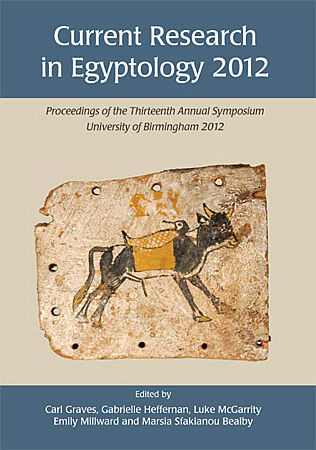
Format: Paperback
ISBN: 9781782971566
Pub Date: 19 Mar 2013
Series: Current Research in Egyptology
Description:
The thirteenth Current Research in Egyptology (CRE) conference was held from the 27th – 30th March 2012 at the University of Birmingham and once again provided a platform for postgraduates and early career Egyptologists, as well as independent researchers, to present their research. These proceedings for CREXIII represent the wide-range of themes that were offered by delegates during the conference, and cover all periods of Egyptian history; from Predynastic skeletal analysis through to Egyptology during the Islamic Middle Ages. These twelve papers include gender studies, analysis of Egyptian festivals, revisiting of chronological models, archaeological reanalysis of ancient landscapes, as well as social, historical and linguistic studies allowing a new appraisal of many aspects of Egyptian culture and history.
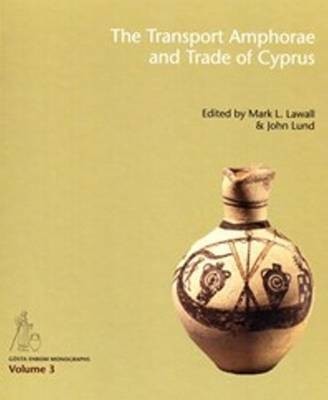
Format: Hardback
Pages: 244
ISBN: 9788771242133
Pub Date: 31 Jan 2013
Description:
Placed as a stepping stone on the sea route between Europe and the New East, Cyprus has always been a meeting place of many cultures. Though rarely united politically through many millennia of history - and for extended periods subject to foreign rule - the island nonetheless managed to maintain specific and unique identities. This publication seeks to throw new light on important aspects of the economy of Cyprus between c.
700 BC and AD 700 through a concerted study of the transport amphorae found in and around the island. These standardised containers of fired clay were commonly used for shipping foodstuffs from their places of production to the consumers in antiquity. Completely preserved or found only in fragments, such vessels are a prime source of information about the island's exports and imports of agricultural products, and ultimately about the fluctuations in the economy of Cyprus through a crucial millennium and a half of her history. The jars thus contribute both to our understanding of the changing intensities of Cypriot connections with other centres around the Mediterranean and to the documentation of regional patterning within the island itself.
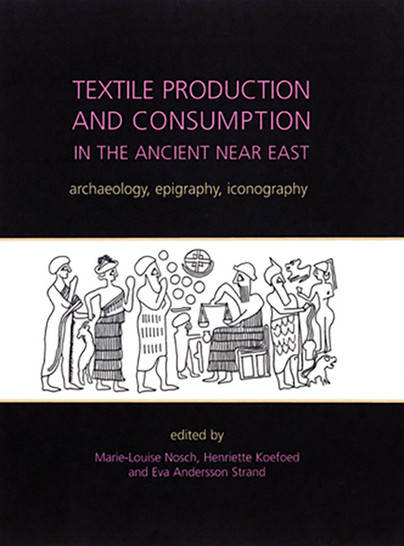
Format: Hardback
Pages: 200
ISBN: 9781842174890
Pub Date: 11 Jan 2013
Series: Ancient Textiles
Illustrations: 8 colour & 82 b/w illustrations
Description:
In the past, textile production was a key part of all ancient societies. The Ancient Near East stands out in this respect with the overwhelming amount of documentation both in terms of raw materials, line of production, and the distribution of finished products. The thirteen intriguing chapters in Textile Production and Consumption in the Ancient Near East describe the developments and changes from household to standardised, industrialised and centralised productions which take place in the region.
They discuss the economic, social and cultural impact of textiles on ancient society through the application of textile tool studies, experimental testing, context studies and epigraphical as well as iconographical sources. Together they demonstrate that the textile industries, production, technology, consumption and innovations are crucial to, and therefore provide an in-depth view of ancient societies during this period. Geographically the contributions cover Anatolia, the Levant, Syria, the Assyrian heartland, Sumer, and Egypt.
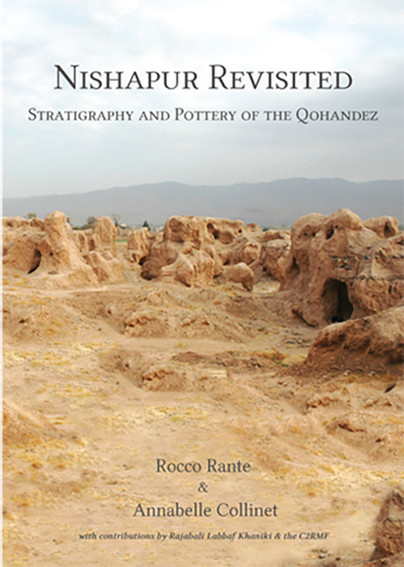
Format: Hardback
Pages: 144
ISBN: 9781842174944
Pub Date: 08 Jan 2013
Illustrations: 105 col illus.
Description:
Nishapur in eastern Iran was an important Silk Road city, its position providing links to central Asia and China, Afghanistan and India, the Persian Gulf and the west. Despite previous excavations there are many unresolved questions surrounding the site; when was the city founded? Is Nishapur a Sasanian city?
Was it founded by the Sasanian king Shapur I or II? The question of chronology of occupation and the ceramic sequence is also problematic particularly for late antiquity and the medieval period, as well as a complete topography of the site. The Irano-French archaeological mission at Nishapur (2004 to 2007) (CNRS-MAEE-Musée du Louvre) focused on the Qohandez, or citadel, the oldest part of Nishapur. Excavations were conducted in different areas of the mound, in order to address these questions. After an introduction to the site and the former American and Iranian excavations, this book presents the stratigraphy and the pottery of the site. The difficulties involved in establishing a precise history of the site, as well as the complexities of studying the pottery led to a program of analysis undertaken by the Research Centre of French Museums (C2RMF). Chemical and petrographic analysis, thermoluminescence (TL) dating and archaeomagnetism analysis as support to the TL results were done. A pottery database has been created regrouping the stratigraphical and laboratory analyses data, in order to manage and present an organised corpus of 1000 samples. The combination of the data from the stratigraphical and laboratory analyses gives an accurate and completely new chronology of the site. Moreover, the study also brought to light a new typological sequence of the ceramic, as well as new data about the pottery production at Nishapur.
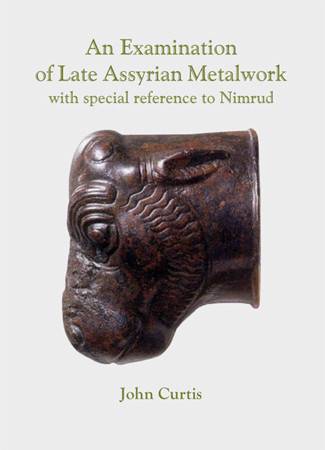
Format: Hardback
Pages: 330
ISBN: 9781842175071
Pub Date: 31 Dec 2012
Description:
Although the Assyrian kingdom that dominated the Ancient Near East between the ninth and seventh centuries BC had a rich material culture, attested particularly by the distinctive stone wall reliefs and colossal gateway figures, practically nothing is known about Assyrian metalwork. There has been no previous survey of this subject, largely because most of the material was not accessible. This volume makes available for the first time a vast amount of previously unpublished metalwork, much of it from the Assyrian capital city of Nimrud, excavated first by Sir Henry Layard between 1845 and 1851 and then by the British School of Archaeology in Iraq between 1949 and 1963.
It emerges that Assyria had a thriving metalworking industry probably superior to any contemporary state in the region, and was producing large quantities of sophisticated bronze and ironwork, of high technical quality and sometimes elaborately decorated. This book will therefore be of interest to archaeologists, art historians and metallurgists. It is the publication of a PhD thesis that was successfully submitted in 1979. It is published here in its original form in order to make the large amount of primary data that it contains available to a wider circle of scholars.
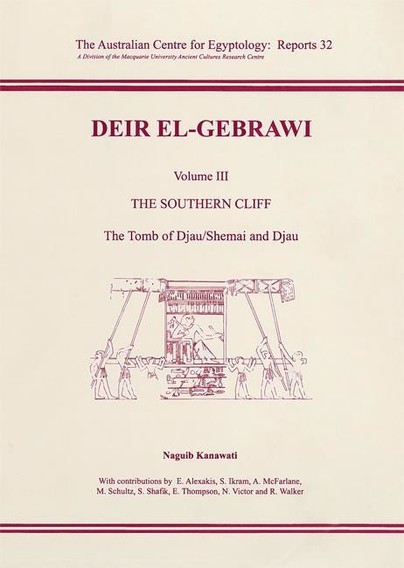
Format: Paperback
Pages: 84
ISBN: 9780856688553
Pub Date: 30 Nov 2012
Series: ACE Reports
Description:
A new complete record of the architecture, scenes and inscriptions in the important tomb of Djau with description and translations. The volume includes studies by M. Schultz and R.
Walker of the recently discovered human remains of Djau and a study of mummification techniques by S. Ikram.
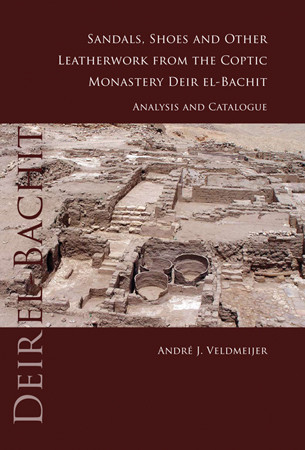
Format: Paperback
Pages: 276
ISBN: 9789088900747
Pub Date: 30 Sep 2012
Description:
The Coptic monastery and cemetery Deir el-Bachit stands on the hilltop of Dra' Abu el-Naga, the well-known necropolis in Qurna (West Bank, Luxor). It is the largest Coptic monastery complex preserved in Western Thebes and the first monastery that has been systematically investigated. The excavation of the monastery was started as a DFG-Project des Ägyptologischen Instituts der Ludwig-Maximilians-Universität Muenchen in close collaboration with the Deutsches Archäologisches Institut Abteilung Kairo.
Until the start of the investigations in 2001 with a survey, little research was done. After three seasons of preliminary research, full archaeological research was started in 2004. The leatherwork was studied in 2007, the present volume of which presents the results. The book consists of two parts: the analysis and a detailed catalogue, including colour images of all finds and, where necessary, line drawings. The finds are analysed within the framework of the excavation as well as within the frameworks of the Ancient Egyptian Leatherwork Project and the Ancient Egyptian Footwear Project (www.leatherandshoes.nl).
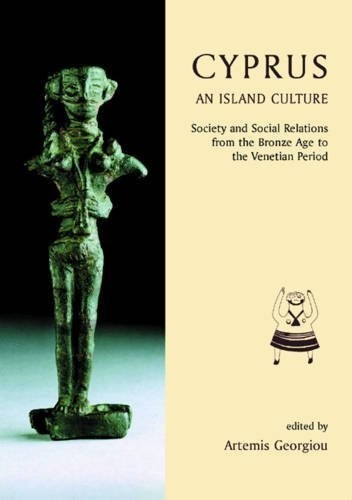
Format: Hardback
Pages: 256
ISBN: 9781842174401
Pub Date: 31 Aug 2012
Illustrations: b/w illus
Description:
This volume, introduced by Edgar Peltenburg, presents the results of latest research by young scholars working on aspects of Cypriot archaeology from the Bronze Age to the Venetian period. It presents a diversity excavation, material culture, iconographic and linguistic evidence to explore the themes of ancient landscape, settlement and society; religion, cult and iconography; and Ancient Cyprus and the Mediterranean.















